With Excel a unique count has always been a challenge. Approaches involve either long, convoluted array formulas (see here or this question ) or using Pivot tables as an intermediate step.
With the new Dynamic Array functions currently in preview for Office 365 Insider builds, this is a piece of cake, though.
This formula entered into just one single cell, no copying, will filter the data to return only the unique rows:
=UNIQUE(FILTER(B4:D9,(C4:C9=G2)*(D4:D9=G3),""))
The screenshot shows that the data automatically "spills" into the rows below.

If you are only interested in the final count, then filter only the first column and count the resulting data in one formula:
=COUNT(UNIQUE(FILTER(B4:B9,(C4:C9=G2)*(D4:D9=G3),"")))


